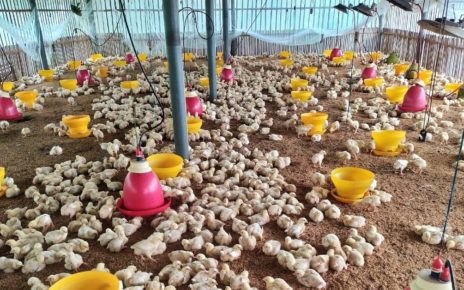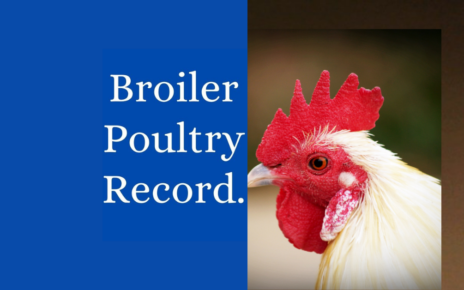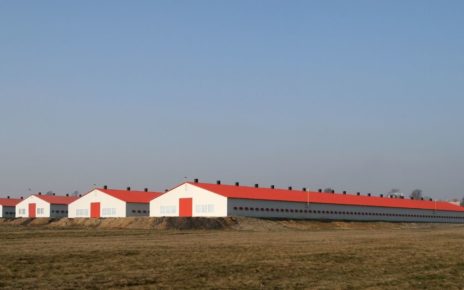Water is an essential nutrient that impacts virtually all physiological functions. Water comprises 65-78% of the body composition of a bird depending on age. Factors including temperature, relative humidity, diet composition and rate of body weight gain influence water intake.
Best water quality is vital to efficient broiler production. Measurements of water quality include pH, mineral levels and the degree of microbial contamination.
It is essential that water consumption increases over time. If water consumption decreases at any point, bird health, environment and/or managerial techniques should be re-assessed immediately.
Although broilers are tolerant of some minerals in excess, (calcium and sodium, for example), they are very sensitive to the presence of others. Iron and manganese tend to give water a bitter taste that may decrease consumption.
In addition, these minerals support the growth of bacteria. If iron is a concern, filtration systems and chlorination are effective controls.
It is advisable to filter the water supply using a filter with a mesh of 40-50 microns. The filter needs to be checked and cleaned at least weekly.
Complete Poultry Training – Link
Calcium and magnesium in the water are measured by hardness. These minerals in combination can form scale or deposits that will compromise the effectiveness of a drinker system.
This is especially true of closed systems. Water softeners can be incorporated into a system to mitigate calcium and magnesium effects. However, sodium levels should be assessed before a salt-based product is used.
Broiler performance can be impeded by as little as 10 ppm nitrates. Unfortunately, there are currently no cost effective options for removal. Water should be tested for nitrates because elevated levels may indicate sewage or fertilizer contamination. Chronic poor performance may indicate contaminated water and requires prompt testing.
When testing water, evaluating the total coliform bacterial count is important, as high levels can cause disease.
Assessing the total bacteria through a plate count will reflect the effectiveness of the water sanitation program.
Microbial contamination can be introduced from the source of water forward. If an effective water sanitation program is not in place, proliferation of bacteria will readily occur.
A regular water sanitation and water line cleaning program can provide protection against microbial contamination and the build-up of slimy bio-films( a thin but robust layer of mucilage adhering to a solid surface and containing a community of bacteria and other microorganisms ) in water lines.
once bio-films established in water lines, bio-films provide a place for more detrimental bacteria and viruses to hide from disinfectants and also act as a food source for harmful bacteria.
Products which contain hydrogen peroxide have proven to be outstanding for the removal of bio-films in water lines.
Biofilms have influence on natural contaminants, – iron, sulphur, etc., – vitamins, electrolytes, organic acids,sugar water, vaccines and stabilizers, antibiotics and probiotics.
Sodium Dichloro-Iso- Cynunurate Tablets are easily available in the market & Can Be used as per dose recommended by manufacturers.
Chlorine is most effective when used in water with a pH of 6.0 to 7.0.
Inorganic acids such as sodium bisulphate reduce water pH without tainting the water.
pH is the measure of how many hydrogen ions are in solution and is measured on a scale of 1.0 to 14.0 with 7.0 being neutral & can be measured easily with P.H.Meter cost very less .
PH below 7.0 indicates an acid while numbers above 7.0 indicate an alkaline. PH above 8.0 can impact taste by causing bitterness, thus reducing water consumption.
High water pH can be reduced by using inorganic acids & Organic acids. But some time Organic acids
Can also negatively affect water consumption and so are discouraged or must be used with proper guidance.
TDS (Total Dissolved Solid)-In Water, many minerals / solid parts are also present. To calculate Solid parts presented in water we came to TDS by a simple testing device available easily in the market at very less cost, called TDS meter.
Many Poultry Farmers avoid testing of TDS Count.
TDS Less Than 1000 is considered Very Good for Poultry Farming.
But TDS 1000-3000 ppm- Water suitable for any class of poultry. It may cause watery droppings (especially at higher levels) but with no effect on health but indirectly May Performance.
TDS More Than 3000 not considered good for Poultry’s Birds & should be avoided. Water suitable for any class of poultry. SO NEVER IGNORE TDS Count.
Drain drinking system and header tanks.
Prepare the cleaning solution to the manufacturer’s recommendation.
Where possible, remove the header tank and scrub it clean. Introduce the solution into the water system, usually in the header tank.
Raise each drinker line. Allow the solution to circulate through the drinking system. If circulation is not possible, let the sanitizing solution stand for at least 12 hours. After draining the system, flush the system thoroughly to remove bio-film and sanitizing chemicals.
Make sure protective clothing and eye wear are worn when using chemicals. Turn on the tap at the end of the drinking line and let the water run through until the sanitizing solution appears, then close the end tap.
Remember it is very risky to clean a water tank with disinfectant & even take precaution while opening a bottle/jar of Chemical or disinfectant. Also take precaution while spraying.
Always avoid any miss happening, this can put you or your staff in huge trouble.
Water Testing-
Water testing should be done at least yearly. Samples should be collected at the end of a drinker line using a sterile container when taking the water sample, it is important not to contaminate the water sample.
It’s Important to run the water for a few minutes before taking the sample.
Please Note The Water Quality Standards for Poultry Farming.
Please Note The Water Quality Standards for Poultry Farming.
| Contaminant , mineral
or ion |
Level Considered Average | Maximum Acceptable Level |
| Bacteria Total bacteria | 0CFU/ml | 100 CFU/ml |
| Coliform bacteria | 0CFU/ml | 50CFU/ml |
| Acidity and hardness
Ph |
6.8-7.5 | 6.0-8.0 |
| Total Hardness | 60-180 ppm | 110 ppm |
| Naturally occurring elements Calcium (Ca) | 60mg/L | |
| Chloride (Cl) | 14 mg/L | 250MG/L |
| Copper (Cu) | 0.002mg/L | 0.6mg/L |
| Iron (Fe) | 0.2mg/L | 0.3mg/L |
| Lead (Pb) | 0 | 0.02 mg/L |
| Magnesium (Mg) | 14mg/L | 125 mg/L |
| Nitrate | 10 mg/L | 25 mg/L |
| Sulphate | 125 mg/L | 250 mg/L |
| Zinc | 1.5 mg/L | |
| Sodium (Na) | 32mg/ L | 50 mg/L |
Drinking Water Temperature — Providing extra cool Water in winter to poultry birds can cause huge Growth issues by reducing water Intake. It can also cause Gout issues in Broiler Chicks & providing extra warm water in summer also can increase the chances of heat stroke.
Now Move to Ideal Temperature for the Water for better Growth.
Put Thermometer in water, which birds are consuming.
Note temperature.
If Less than 18 Degree Celsius or less than Around 60 Degree Fahrenheit, then it will not give Good growth.
Ideal Temperature between 18 -21 Degree Celsius (64-70°F) is considered good for better Growth.
More than 18-21 (64-70°F) is not good and will decrease your profit because of huge stress on birds.



